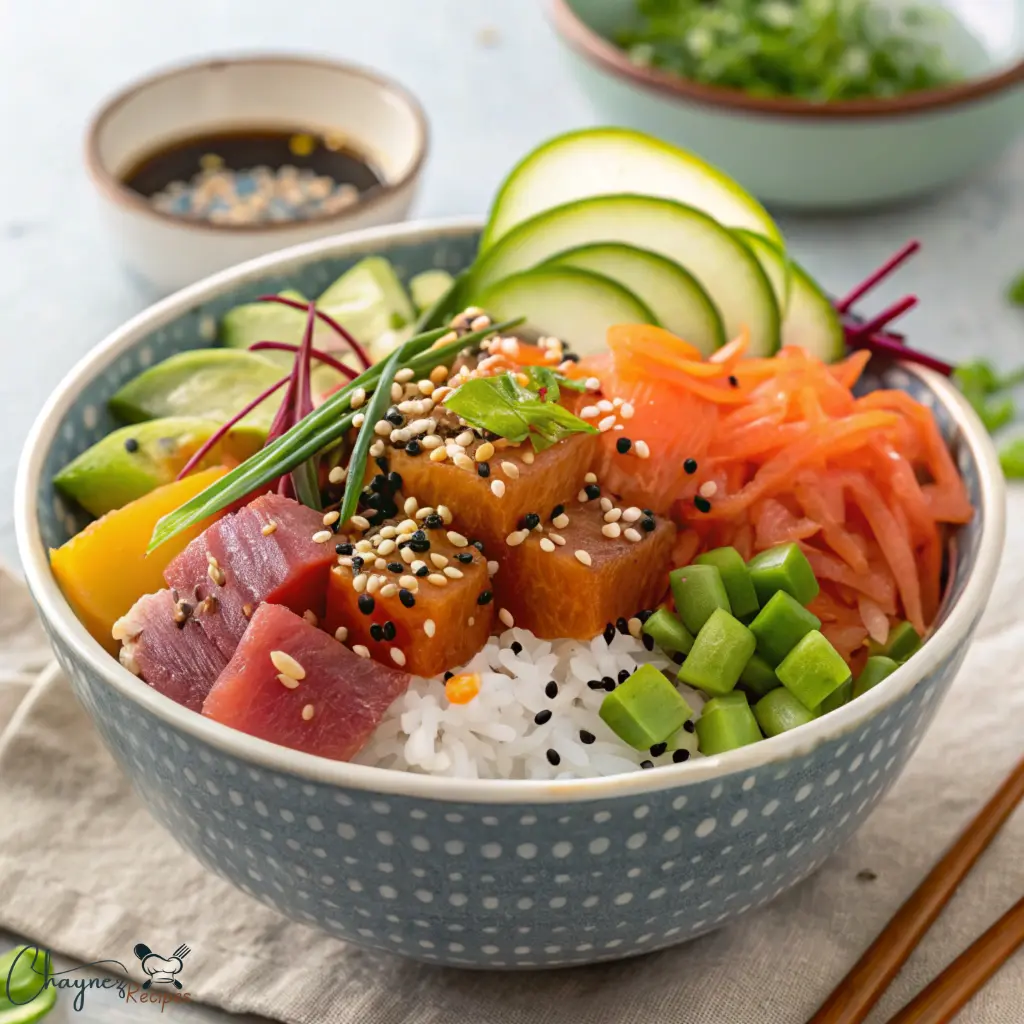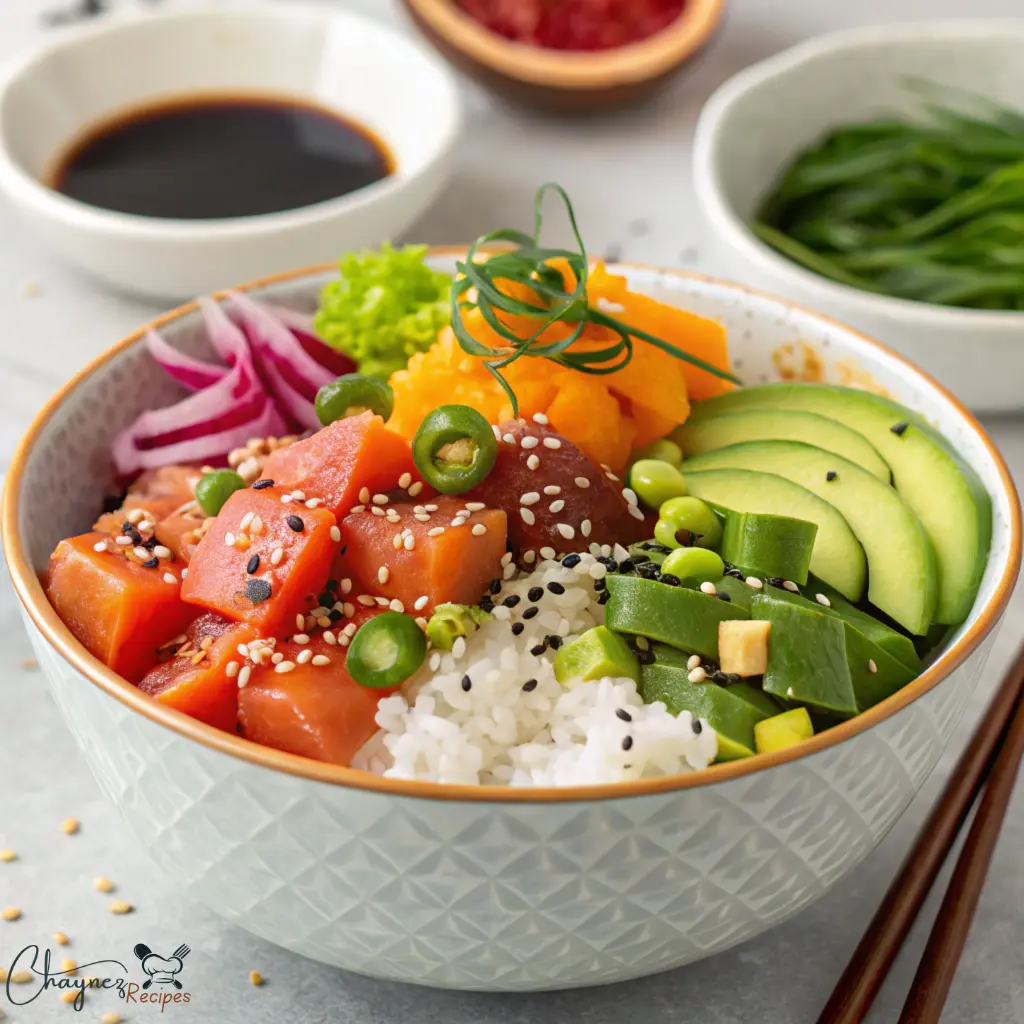In recent years, poke bowls have captured the hearts of food enthusiasts around the globe. With their colorful presentation, fresh ingredients, and customizable nature, they offer an appealing dining experience that balances taste and nutrition. But beneath the layers of rice, fish, and vibrant toppings, one question arises: is poke bowl really healthy? This comprehensive guide delves into the origins, ingredients, nutritional profile, and health considerations of this popular dish, helping you understand whether it deserves a place in your diet.
Originating in Hawaii, poke (pronounced “poh-kay”) translates to “to slice” or “to cut crosswise,” reflecting the preparation of raw fish the dish’s centerpiece. Traditionally, poke consists of diced tuna or salmon seasoned with soy sauce, sesame oil, and seaweed. However, modern interpretations have expanded the dish, offering a wide array of bases, proteins, and toppings to suit various dietary preferences. Whether served as a quick lunch or a gourmet dinner, poke bowls are celebrated for their ability to combine healthful ingredients with bold flavors.
Despite their popularity, not all poke bowls are created equal. The healthiness of this dish depends largely on the ingredients and portion sizes. While it’s easy to load up on nutrient rich options like fresh vegetables, lean proteins, and healthy fats, high calorie sauces and toppings can transform an otherwise wholesome meal into an indulgent treat. This article examines what makes a poke bowl healthy, offers tips for optimizing its nutritional value, and explores the potential drawbacks you should keep in mind.
So, if you’ve ever found yourself wondering whether a poke bowl aligns with your health goals, read on. Together, we’ll unpack the facts and uncover whether this trendy dish is truly as good for you as it looks.
What Is a Poke Bowl?
Originating from Hawaii, the poke bowl combines diced raw fish, typically ahi tuna or salmon, with a variety of toppings and seasonings. Served over a base like rice or greens, this dish is both customizable and versatile. Popular toppings include:
- Seaweed
- Avocado
- Edamame
- Pickled vegetables
- Sesame seeds
The combination of flavors and textures has made poke bowls a popular choice worldwide. But does their popularity equate to a healthy meal?
Nutritional Profile of a Poke Bowl
The healthiness of a poke bowl largely depends on its ingredients. Let’s break down the typical components:
Base
The base of a poke bowl often includes:
- White rice: High in carbohydrates but low in fiber.
- Brown rice: Provides more fiber and nutrients compared to white rice.
- Greens: A low-calorie option rich in vitamins and antioxidants.
Choosing a greens base or brown rice can significantly increase the nutrient density of your meal.
Protein
Raw fish, such as tuna or salmon, is the primary protein in a poke bowl. These fish are:
- High in omega-3 fatty acids, which support heart and brain health.
- Rich in protein, essential for muscle repair and overall body function.
However, some fish may contain mercury, so it’s essential to consume them in moderation.
Toppings
Toppings vary widely but often include both healthy and less healthy options:
- Healthy choices: Avocado, seaweed, and edamame provide essential nutrients like healthy fats, fiber, and vitamins.
- Less healthy choices: Fried onions or mayonnaise based sauces can add unnecessary calories and fats.
Sauces
The sauces in a poke bowl can make or break its healthiness. While soy sauce and sesame oil add flavor, they can also contribute:
- High sodium levels, which may be concerning for people with high blood pressure.
- Extra calories from sugar or oils in some dressings.
Opting for lighter sauces or using them sparingly can make a significant difference.

Is Poke Bowl Really Healthy for Weight Management?
Poke bowls can be an excellent option for individuals aiming to manage their weight, but careful consideration of ingredients and portion sizes is crucial. While poke bowls have the potential to be nutrient dense and satisfying, the wrong combinations can lead to calorie overload. Here’s a more detailed guide to keeping your poke bowl aligned with your weight management goals:
Choose a Weight-Friendly Base
- Greens: Opting for a base of leafy greens like spinach, arugula, or kale significantly reduces calorie intake while adding fiber and essential nutrients. This choice also provides a refreshing crunch and complements other ingredients well.
- Brown rice: If you prefer a rice base, choose brown rice over white rice. Brown rice is higher in fiber, which promotes satiety, and contains more vitamins and minerals.
- Half-and-half approach: For a balanced option, consider mixing greens with a smaller portion of brown rice to enjoy the best of both worlds.
Be Selective with Protein
- Stick to lean, high-quality protein sources like fresh tuna, salmon, or tofu. These options are packed with essential nutrients like omega-3 fatty acids and provide sustained energy.
- Limit your portion to about 3-4 ounces (roughly the size of a deck of cards). While fish is nutritious, consuming excessive amounts can lead to unnecessary calorie intake and, in the case of some fish, higher exposure to mercury.
- Avoid fried or breaded proteins, as these add extra fat and calories.
Prioritize Nutrient-Dense Toppings
- Load up on vegetables like cucumber, shredded carrots, radish, and seaweed. These add volume, vitamins, and minerals without contributing many calories.
- Incorporate healthy fats in moderation. For example, avocado provides heart-healthy monounsaturated fats, but limiting it to a quarter or half of an avocado ensures you stay within your calorie goals.
- Be cautious with calorie-dense toppings like crispy onions, tempura flakes, or excessive amounts of nuts. While these can enhance flavor and texture, they can also quickly increase the calorie content of your meal.
Rethink Your Sauces
- Many poke bowls are drizzled with sauces that are high in sugar, salt, and calories, such as spicy mayo or eel sauce. Opt for lighter alternatives like low-sodium soy sauce, ponzu sauce, or a squeeze of fresh lime.
- Request sauces on the side so you can control the amount used. Even a small reduction in sauce can make a significant difference in calorie and sodium intake.
Mind Your Portion Sizes
- Portion control is key to weight management. Avoid overloading your bowl with too many toppings, even if they are healthy. A balanced bowl should focus on moderation and variety.
- Eating slowly and savoring each bite can also help you recognize when you’re full, preventing overeating.
Consider Meal Timing and Context
- If you’re enjoying a poke bowl as part of a larger meal plan, adjust your other meals accordingly. For example, if your poke bowl includes a significant amount of healthy fats and carbs, aim for lighter meals later in the day.
By being mindful of your choices and prioritizing nutrient-dense ingredients, poke bowls can easily fit into a weight management plan. With a little effort, this delicious dish can be both satisfying and supportive of your health goals.
Benefits of Eating Poke Bowls
Rich in Nutrients
Poke bowls are packed with vitamins, minerals, and healthy fats. Ingredients like fish, avocado, and seaweed offer a wealth of nutrients that support overall health.
Customizable
One of the best aspects of a poke bowl is its flexibility. Whether you’re vegan, vegetarian, or have specific dietary restrictions, you can tailor the ingredients to suit your needs.
High in Protein
With fish as the star ingredient, poke bowls are an excellent source of protein. This makes them ideal for muscle building and recovery, especially for athletes.
Omega-3 Fatty Acids
Salmon and tuna are rich in omega-3s, which:
- Support cardiovascular health
- Reduce inflammation
- Enhance brain function
These benefits make poke bowls a heart-healthy choice.
Considerations Before Eating Poke Bowls
While poke bowls have numerous benefits, there are some factors to keep in mind:
Mercury Content
Certain fish, such as tuna, can contain mercury. To minimize risk:
- Rotate between tuna and other fish like salmon.
- Limit consumption to 1-2 times per week.
Sodium Levels
Many poke bowls contain high-sodium ingredients, such as soy sauce and pickled vegetables. To reduce sodium intake:
- Opt for low-sodium soy sauce.
- Use sauces sparingly or choose lighter dressings.
Caloric Density
While poke bowls can be nutrient-dense, some versions are also calorie-dense. High-calorie toppings and sauces can quickly add up. Be mindful of your choices to maintain a balanced meal.
How to Make a Healthier Poke Bowl at Home
Making a poke bowl at home allows you to control the ingredients and portion sizes. Follow these steps for a nutritious and delicious meal:
- Choose a base: Opt for greens, quinoa, or a mix of brown rice and greens.
- Select high-quality protein: Use fresh fish or plant-based proteins like tofu.
- Add a variety of vegetables: Include colorful options like shredded carrots, cucumber, and bell peppers.
- Pick healthy fats: Add avocado or a sprinkle of nuts.
- Use lighter sauces: Try a mix of lime juice, a dash of sesame oil, and low-sodium soy sauce.
By preparing your own poke bowl, you can enjoy the flavors while ensuring it aligns with your health goals.

FAQs About Is Poke Bowl Really Healthy?
❓ Can poke bowls fit into a keto diet?
Yes, by substituting rice with greens and avoiding sugary sauces, poke bowls can be keto friendly.
❓ Is poke bowl safe for pregnant women?
Pregnant women should avoid raw fish due to the risk of foodborne illnesses and mercury exposure. Cooked fish or vegetarian alternatives are safer options.
❓ Are poke bowls gluten free?
While many ingredients are naturally gluten free, soy sauce often contains gluten. Using tamari or a gluten free soy sauce alternative ensures the dish is suitable.
Final Thoughts: Is Poke Bowl Really Healthy?
Poke bowls can be a nutritious and versatile addition to your diet when prepared thoughtfully. With their mix of lean proteins, fresh vegetables, and flavorful dressings, they offer a balanced meal that caters to a variety of dietary needs. However, it’s essential to pay attention to portion sizes, sauces, and toppings to ensure you’re not unknowingly adding excessive calories, sugar, or sodium. By making informed choices, you can enjoy a poke bowl that aligns with your health and wellness goals.
If you’re looking to expand your culinary horizons, check out some of these delicious recipes that balance flavor and nutrition:
- Banana Oatmeal Pancakes for a healthy and satisfying breakfast option.
- Biscoff Cheesecake Bars to indulge your sweet tooth in moderation.
- Steak Alfredo Recipe for a hearty yet balanced dinner.
- Roasted Turkey Legs to enjoy a protein packed and flavorful meal.
Each of these recipes complements a health conscious lifestyle and provides creative ways to enjoy your favorite foods without compromise. Whether you’re crafting the perfect poke bowl or trying something new in the kitchen, mindful eating can lead to both satisfaction and wellness.
Don’t miss out on more great ideas for healthier baking and cooking. For additional tips, recipes, and updates, follow us on Chaynez Recipes to access our latest posts and social media links.






